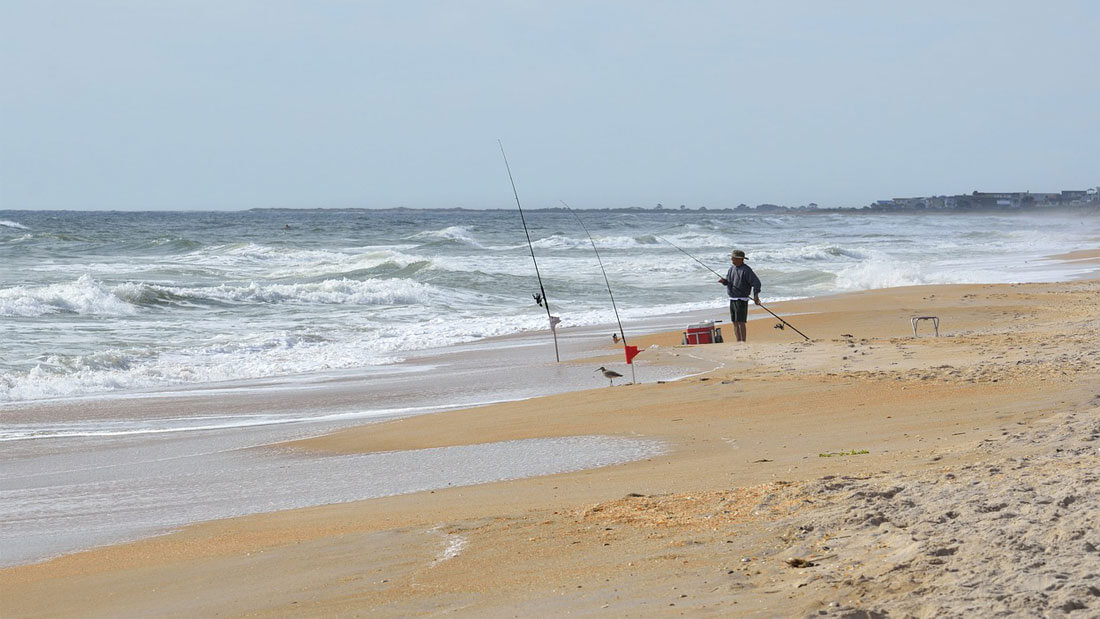Shore Fishing in Florida: What You Need to Know
If your next round of travel plans includes hitting up some of the beaches of Florida, don’t be surprised if you spot folks fishing along the shoreline or venturing out with fishing poles on a kayak. Fishing is legal on all public beaches in Florida as long as you have a Florida saltwater fishing license.
Shore fishing can be an enjoyable activity for both beginner fisherman and experienced anglers. If you’re interested in casting a line on the sandy shores of a Florida beach, here’s what you need to know.

What you can catch?
There may be some variety of fish depending on location, but common fish that can be found on almost every Florida shore are the snook, pompano, and redfish.
It is also possible to catch a shark from the shore. However, the angler must pass an online course and hold a shore-based shark fishing license. This is because certain sharks are prohibited from being harvested, which means that if they are caught, they must be promptly and quickly released.
Between May and August, Loggerhead Sea Turtles may also come to shore to lay nests. Catching the turtles or disturbing their nests is strictly prohibited because the turtles are an endangered species. If you’re shore fishing, stick to catching only fish!
What you should bring?
There are rods, reels, rigs, and lines specifically designed for beach fishing. Most of the time, you’ll be able to find a combo deal where you can purchase everything at once. A surf rod is typically 12 to 15 feet long with a spinning reel that has a 20 to 25-pound line. The most common types of rigs for shore fishing are the fish finder rig and the double dropper loop rig.
You Might Like to Read: Things to Do in Miramar Beach, FL
You’re also going to want to bring the right type of bait. When shore fishing, frozen or live bait will generate better results than a lure. Shrimp, sand fleas, clams, mullets, or small fish are all good bait options.
And, of course, don’t forget the beach gear! Relax under an umbrella and sip on ice-cold drinks while you’re waiting for the fish to bite. Don’t underestimate the power of the Florida sun in these beautiful beaches. Bring sunscreen to help prevent burns. A sunhat or a rash guard can also help keep those with sensitive skin from burning.
What you should look for?
Certain areas on the shore will lead to a more successful fishing outing. Look for a rip current. Fish will often hang outside of currents so that they can catch prey as it is being pulled into the ocean.
Another way to check for fish is by looking for signs of baitfish or birds. If you see birds circling a specific area, that is a good sign that there is a school of fish. Baitfish are smaller fish that linger just under the surface. They often jump to avoid predators. Jumping baitfish is an indicator that there is a larger predator fish underneath.
You Might Like to Read: Things to Do in Miramar Beach, FL
If you’re planning on going off the beach and into the surf with a kayak, consider bringing a fish finder. Fishfinders use echolocation to locate fish within the water so that you know where to cast your line.
How to bring in a fish?
An accurate cast is necessary when bringing in a fish from the ocean. Keep in mind currents may pull your line in a different direction than you were aiming for. Practice casting overhead, sidearm, and underarm to determine which style works best for you. Distance isn’t necessarily your concern with shore fishing. You want to find those areas that have pockets of fish and know how to accurately cast your line to that area.
When you feel a fish tugging at your line, firmly pull your rod upwards. This will set the hook and allow you to reel the fish in. The trick here is timing. If you wait too long, the fish will steal your bait and leave. If you move too quickly, the hook might not set or your line might snap.
While reeling the fish in, step into the water. Try not to drag the fish across the sand. This removes the protective coating on the fish and can harm the fish.
Final thoughts
Florida beaches are great for swimming, sunbathing, surfing, and shore fishing! If you’re an avid fisher or simply want to try something new on your travelers, pull up a beach chair and cast a line in to see what you can fish up.
